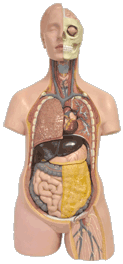At WiseGEEK, we're committed to delivering accurate, trustworthy information. Our expert-authored content is rigorously fact-checked and sourced from credible authorities. Discover how we uphold the highest standards in providing you with reliable knowledge.
What Are Follicular Dendritic Cells?
Follicular dendritic cells (FDCs) are found in the immune system. They are primarily in the lymph follicles of the secondary lymphoid organs, the tertiary lymphoid organs of the lymphatic system, or in the germinal centers of lymph nodes. These cells work in conjunction with B-cells to maintain immune memory, which is an essential part of preventing multiple invasions of the same antigens.
The immune system protects the body from infections, diseases, and other similar problems that can lead to damage of organs and various other systems of the body. In order to accomplish this task, there are different types of cells the body makes to fight off antigen invasions. Follicular dendritic cells are one such type.

Dendritic cells are classified into three groups, and each group has a different purpose. Group one presents the antigens to activate the T-cells. The second group triggers and maintains immune tolerance so that the immune system does not attack and destroy antigens created by the body. Follicular dendritic cells, the third group, act as a stimulant for B-cells. FDCs possess the ability to prolong the life and enhance the functions of B-cells and the memory cells they create.
B-cells are the cells that make antibodies. The antibodies neutralize antigens and make memory cells that are specific to each type of antigen. When the same type of antigen invades again, these cells remember the antigen and respond quicker. After the antibodies begin to respond to an antigen, follicular dendritic cells act as a fuel to keep antibodies going while also holding antibodies that have bound to antigens. From this point, the B-cells provide the antibody and antigen complexes to T-cells to be destroyed.
Through the ability to act as a reservoir for antibodies that have already bound to antigens and the stimulation abilities, follicular dendritic cells also help aid in the maturation of B-cells. The average life span of an activated B-cell is only about a week. With extra aid from these dendritic cells, research has shown that B-cells can maintain memory and respond for many months.
Unlike other dendritic cells, follicular dendritic cells have a different composition. While other dendritic cells have hematopoietic properties, meaning they resemble cells made in marrow, FDCs are stromal cells. This means they resemble the cells of connective tissue. Although FDCs do not resemble other types of dendritic cells, they are all found in the same locations.
AS FEATURED ON:
AS FEATURED ON:










Discuss this Article
Post your comments